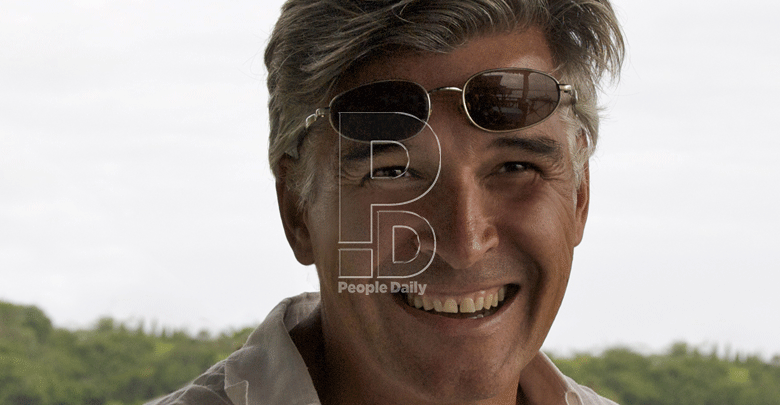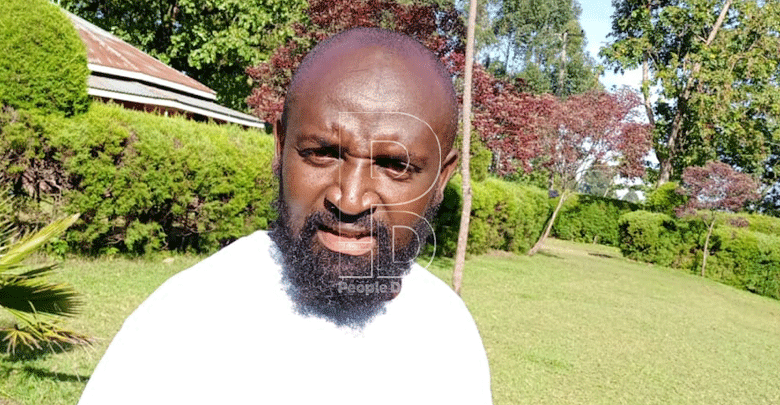Hearty art debate: 58 years of independence, Kenya has never had a national art gallery

In all of its 58 years of independence, Kenya has never had a national art gallery. And with the constant demise of art galleries, plans to establish a central gallery in Nairobi are at an advanced stage. Harriet James combs through the issue.
Something great is cooking and will be ready to be served to the Kenyan artists soon.
The National Museum of Kenya (NMK) has presented a proposal to the government to create a national art gallery.
It will be a place where the significant role of art in documenting the historical, social as well as the cultural evolution of a country is appreciated.
Africa, and in particular Kenya, is blessed to have artistic diversity; from sculptures to paintings, literature, architecture, music and film.
For instance, it is said that the earliest records of art in Africa are abstract engravings on rock that are said to be scientifically dated 77,000 years old, making them the oldest in the world.
This gives African collecting institutions a crucial function in safeguarding the continent’s creative heritage.
Sadly, Kenyans have no access to the collections and the stories that define their history making it vital to have a national art gallery.
In a recent webinar dubbed ‘Kenya’s First National Art Gallery and What It Means for the Arts’, NMK board chairman Tony Wainaina explored what this gallery means for the country and what the proposal entails.
“The national art gallery will be a public space where people can learn and appreciate our rich and diverse visual arts heritage through the ages,” he said, adding that people accomplished in the arts in the diaspora will also have a space to showcase their work.
Situated in the Nairobi National Museum, the gallery would focus on visual arts and give a storyline of Kenyan art based on three themes; pre-historic, traditional and modern or contemporary. 
The gallery will also seek to have a collection of diaspora artists who are making an impact abroad such as Magdalene Odundo (a Kenyan-born British studio porter), Wangeci Mutu, Elkana Nyongesa and Cyrus Kibiru among others.
The two-phased project would also have a children visual art education and commercial art centres.
“We want to elevate it to the education level since children are our biggest visitors when it comes to museum visitors,” said Wainaina.
The sustenance
To sustain its operations, the main gallery will have permanent collection of galleries, rotating exhibitions, resource centre and restaurants. It will also rely on government support and either public or private funding.
“It will be a world class visual arts institution that seeks to advance the Kenyan and East African visual arts research, training and exhibition within the international context.
It will be a place that will elevate the relevance of art in the country and a destination for both local and global audience,” he states.
At the moment, Kenya has no central and dedicated national institution that provides historical as well as accountability for the evolution of the Kenyan art.
But for the past five decades, several attempts have been made to establish an art gallery.
For instance, in the late 60s, Kenya’s second vice president and a firm art supporter and collector Joseph Murumbi, together with his wife Shelia Murumbi and friend Alan Donovan, opened Africa’s first Pan-African art gallery.
In 1965, Paa Ya Paa Arts Centre, the oldest indigenous art gallery in Kenya was created, followed much later by Chemi Chemi Cultural Centre.
A decade later, the Sisi Kwa Sisi artists’ movement took root with a fiery goal to use art to highlight and create awareness about political and social issues.
In the 80s, galleries were quiet and were mainly donor-driven, which saw a number of donors including Rockefeller and Ford foundations inject their support to the galleries.
But in the early 2000s, the National Museum formulated an idea to set up a national gallery. To date, however, that dream has remained elusive, and the Covid-19 pandemic has also made the heightened plans to be halted due to the health restrictions put in place by the government to curb its spread.
However, the proposed gallery would be the first-of-its-kind in East Africa since formal art education in the region started in the 1930s.
“The success of the project relies on the ability to secure funds from the expected sponsor.
It is the lack of funding that has made the project stall and also have an unsustainable local art market, which in turn had resulted in low visibility and voice of art in Kenya,” explains Wainaina.
Painter and mural artist Eric Muruka feels that the national gallery will be relevant to the Kenyan artists.
“Of late, we’ve been having challenges in getting exposure or getting a place where we can exhibit our work.
I think a gallery like this would be important as it would be a place to share ideas too and learn from each other,” he tells Spice, adding that a national gallery would be a melting point for all Kenyan artists where they can both work together and market their work.
“Most of our paintings are gathering dust in our workshops and sometimes we give them to friends as gifts. 
It’s discouraging to pursue art and some of us have dropped the venture for other careers, which is not healthy for the artists,” he says.
Evaluative infrastructure
To be effective, Muruka proposes that the gallery should have experts to evaluate and value art pieces, and advice artists accordingly in order for them to grow and produce world class modern art that is quality and can be competitive even in international auctions.
“We need exposure as many artists are unable to sustain themselves. The art materials are expensive nowadays and some are opting to use cheaper materials that compromise the quality of the products.
As such, the national gallery should have a set of experts to advise the artists whenever they face challenges,” he says.
From 2002, art classes were dropped from the Kenyan syllabus, making art an irrelevant pursuit resulting in the disappearance of young artists.
However, through the Competence-Based Curriculum (CBC), art has been given another lease of life, and the proposed national art gallery would encourage the increase in awareness and the number of artists around.
James Kimathi, a traditional and digital painter, and founder of Sketchmasta School of Art, believes that a national gallery would play a vital role in the art industry in terms of perception and market.
He intimates: “Growing up, art was not fully embraced and recognised as a professional career.
Having such a gallery would help change that narrative, especially in the older age group setting who believe that art is just a co-curricular activity or a hobby.
The government has done well to introduce the CBC syllabus with art being one of the competencies.”
He further notes that one of the challenges that a lot of artists face is lack of supplies.
“Currently we have three or four supply outlets in the country, and it’s not a wonder to walk into a supply shop to find out almost everything has been sold out. 
A national gallery would then pave a way for such businesses, thus eliminating the challenge,” he says.
Peter Nderitu, a realism artist who began practicing art in 1998, also welcomes the idea to have a national art gallery.
However, he has fears of cartels taking over the project and recommends that structures be put in place to ensure that it benefits all artists.
“There has been a tendency of such forums being taken over by cartels who make sure that only a clique of artists allied to them benefit. I have suffered from such and it really hurts.
If there is a way they can have an office in every county and have a representative who would help and identify the artists from that particular county, and ensure that all counties get an equal share of the platform, then that will be a big plus for us,” he intimates.
Artistic heritage
Graffiti mural and abstract artist Smokillah welcomes the move too and believes that the gallery would be vital for the growth of Kenyan visual art industry.
“We should have more art galleries where more people can be able to access them, see, appreciate and buy Kenyan art. There’s a whole lot of new talent coming up and this would be important for their growth,” he notes.
Dr Stephanie Njambi, a specialist trainee doctor in obstetrics and gynaecology and a visual artist currently based in the UK, has toured national galleries in London, Paris and Barcelona.
According to her, nationals in these countries are really proud of their artistic heritage and the galleries are a place where both the art and artists are celebrated and honoured.
She says, “Having a national gallery in Kenya has always been my dream, and it would be a great honour for any artist including me to be exhibited there.
The exhibitions tend to be for a lifetime, a way to document and preserve culture and history.”
However, Malindi-based artist Gianpaolo Tomasi has a different view. “I believe that national galleries are a scam.
Art is not a market and must be spread everywhere, even in hospitals or cemeteries. It exists as the main creative expression of the human beings and for all human beings; hence it should be brought to everyone.
There are young men who want to express themselves and that is what we should encourage and finance,” he says in conclusion.



